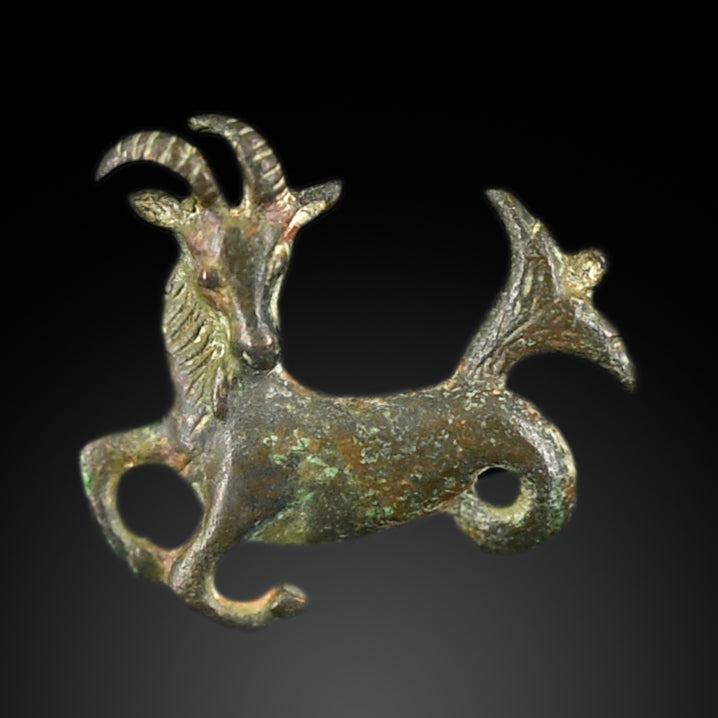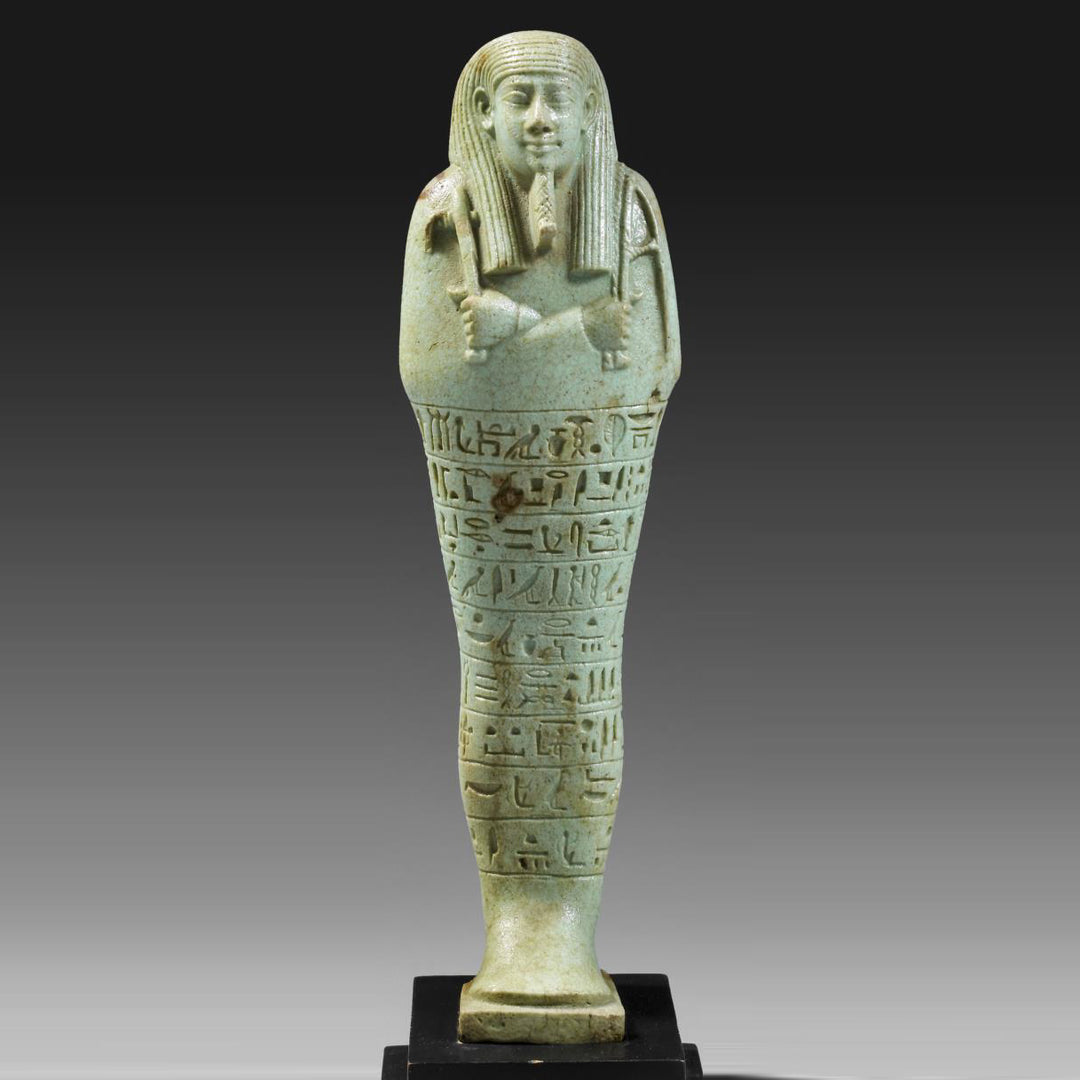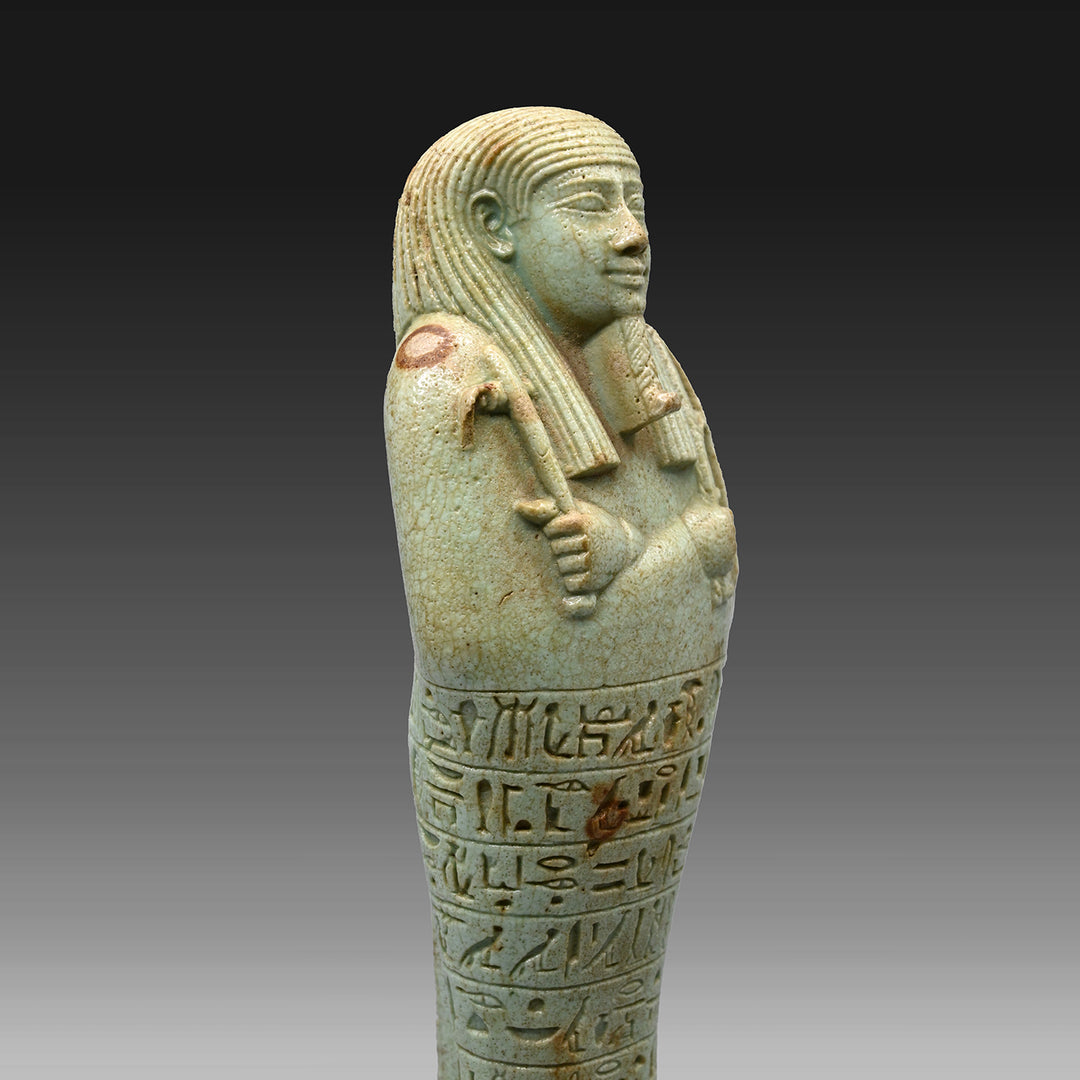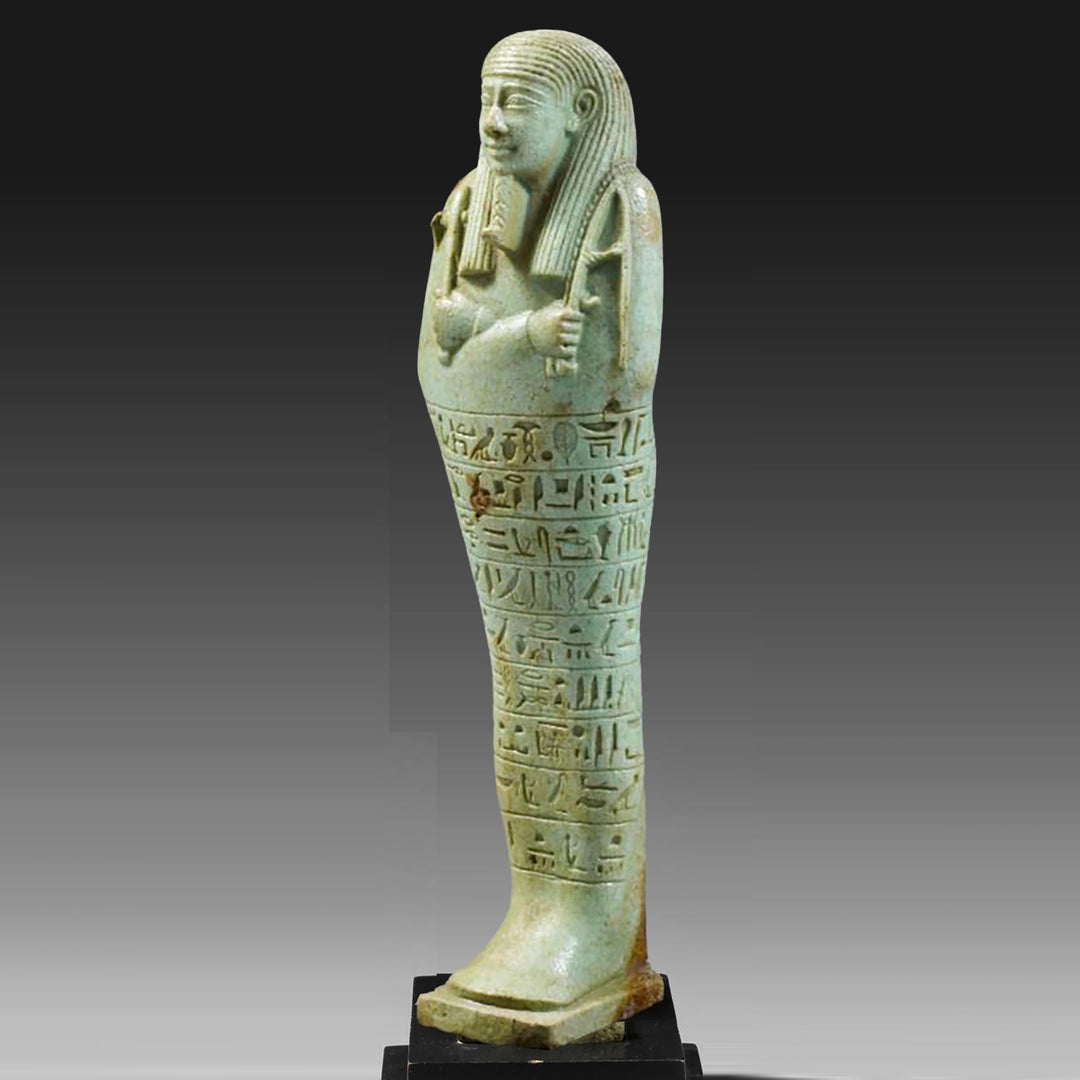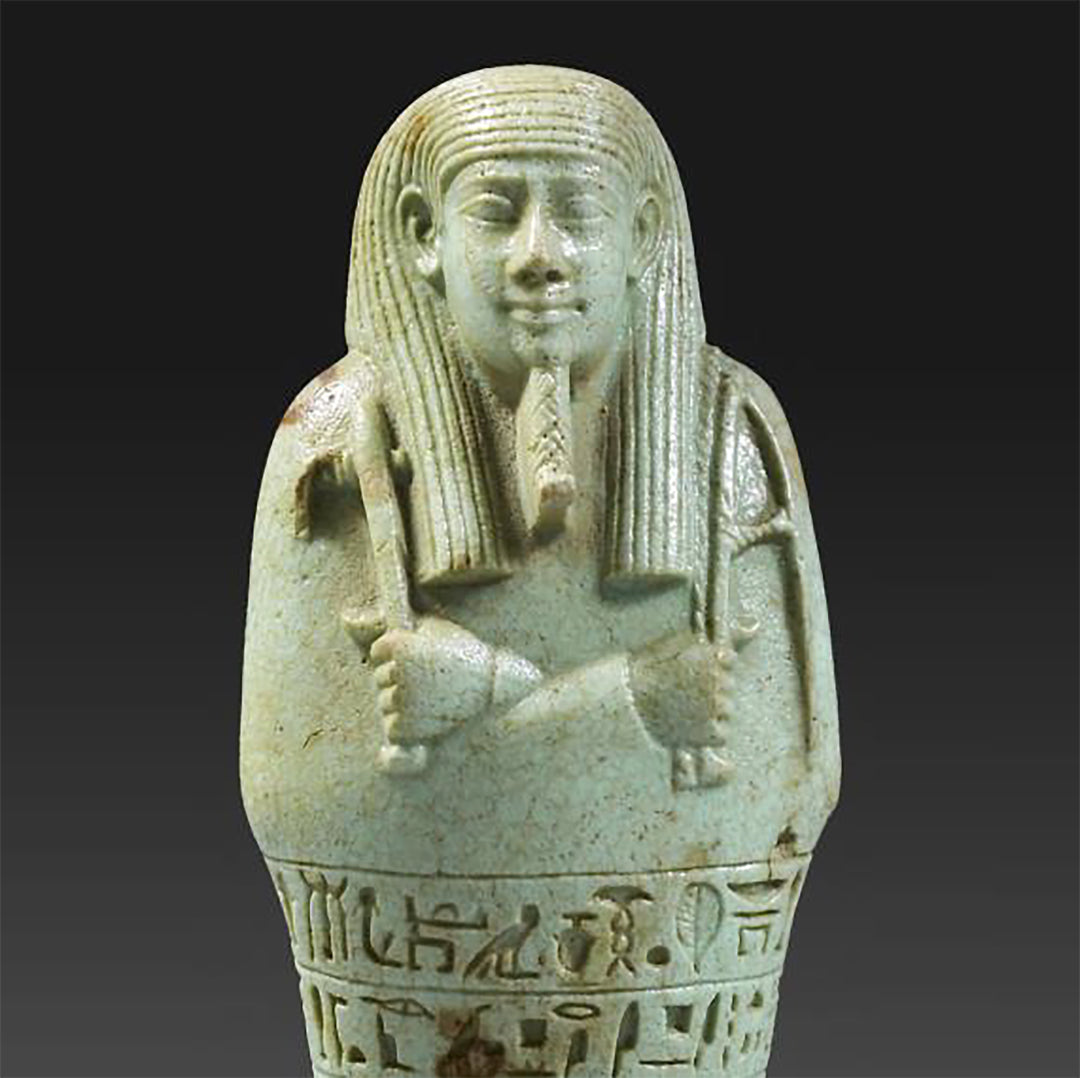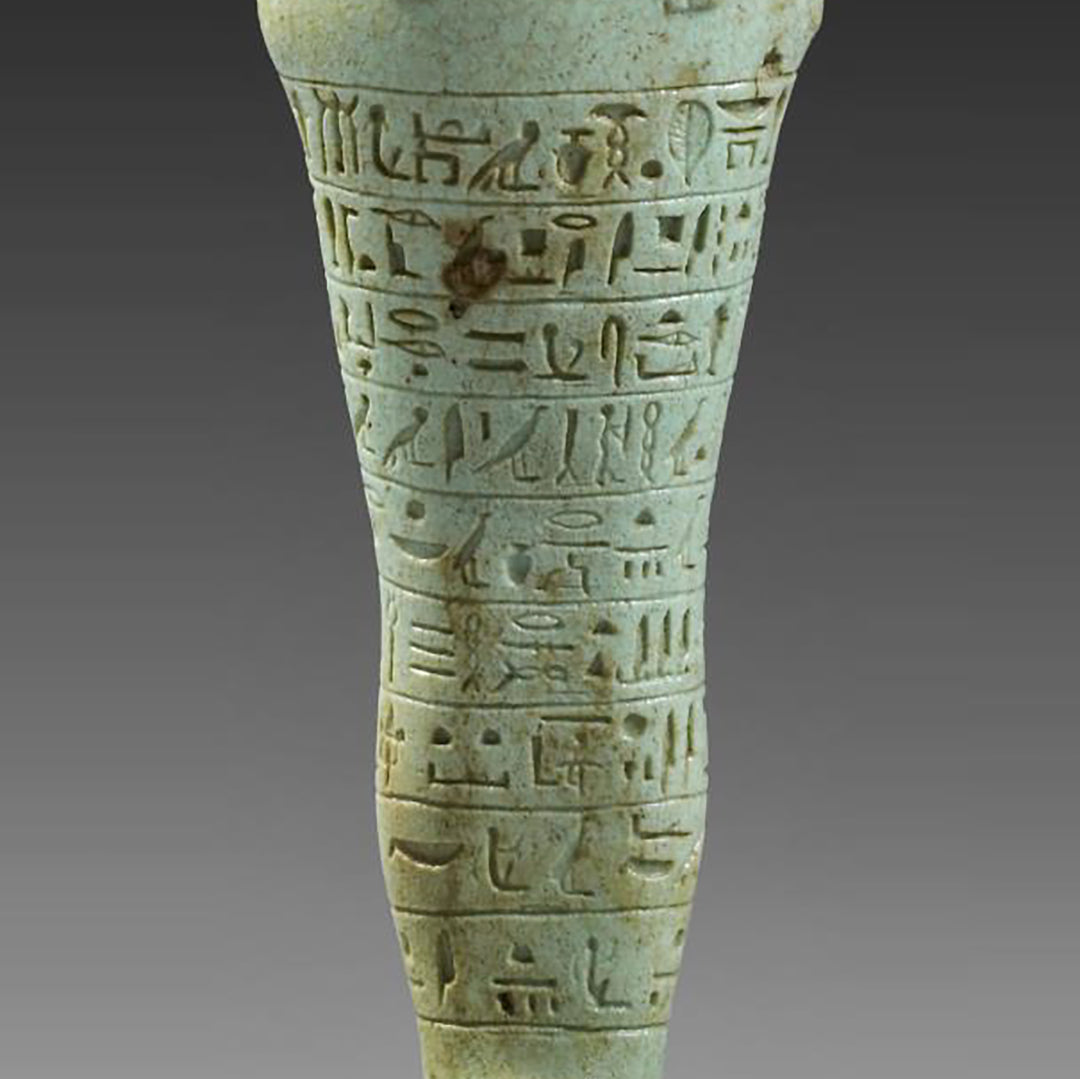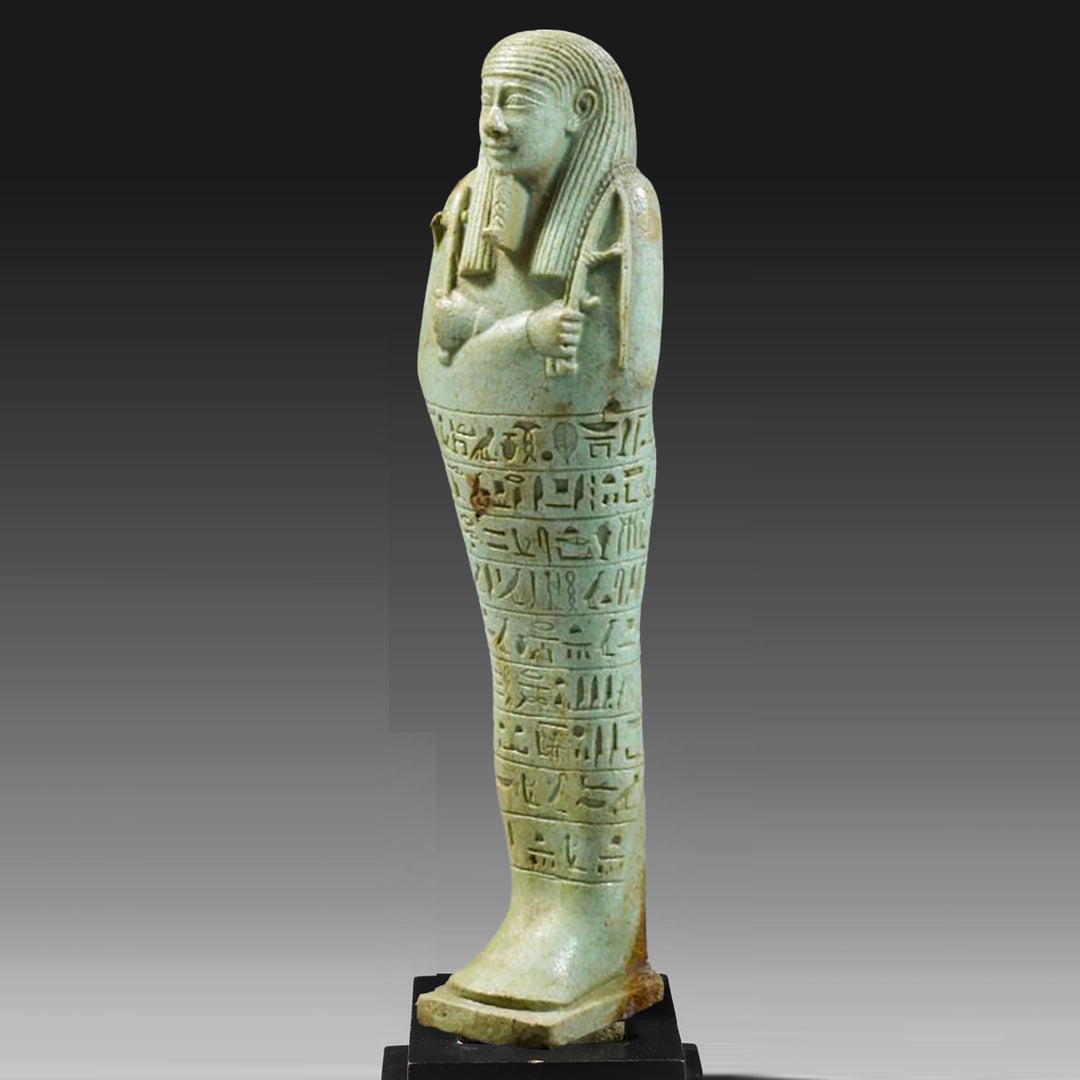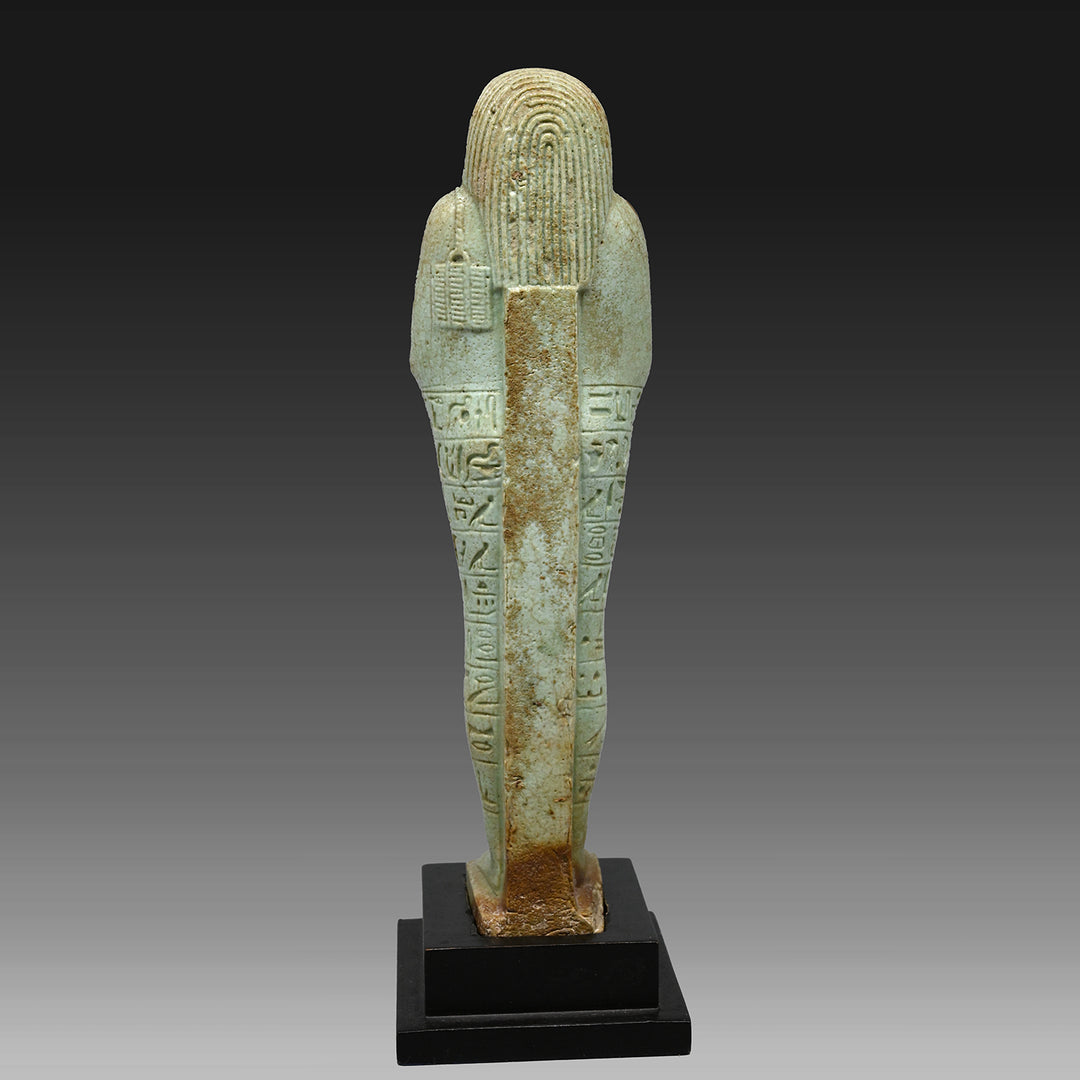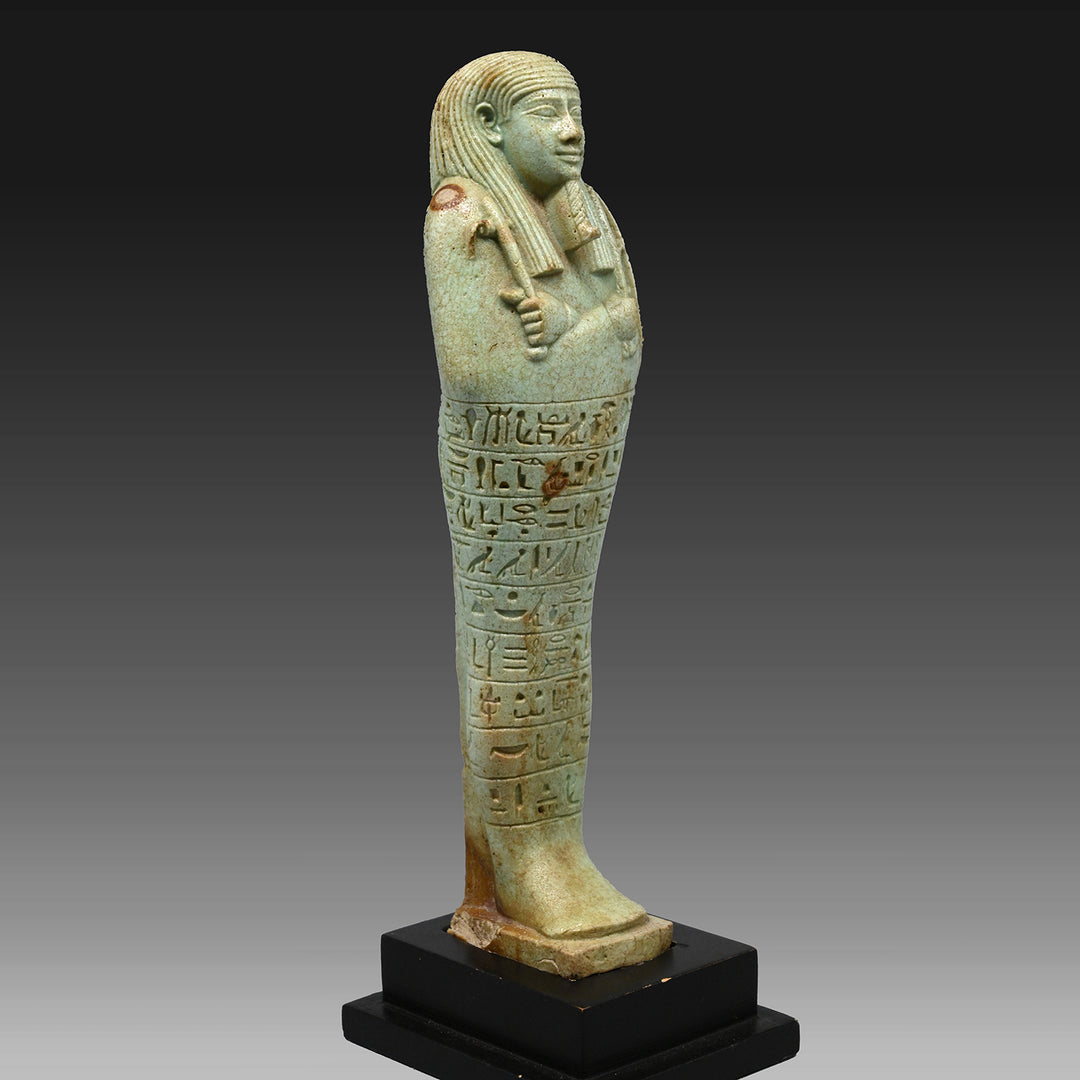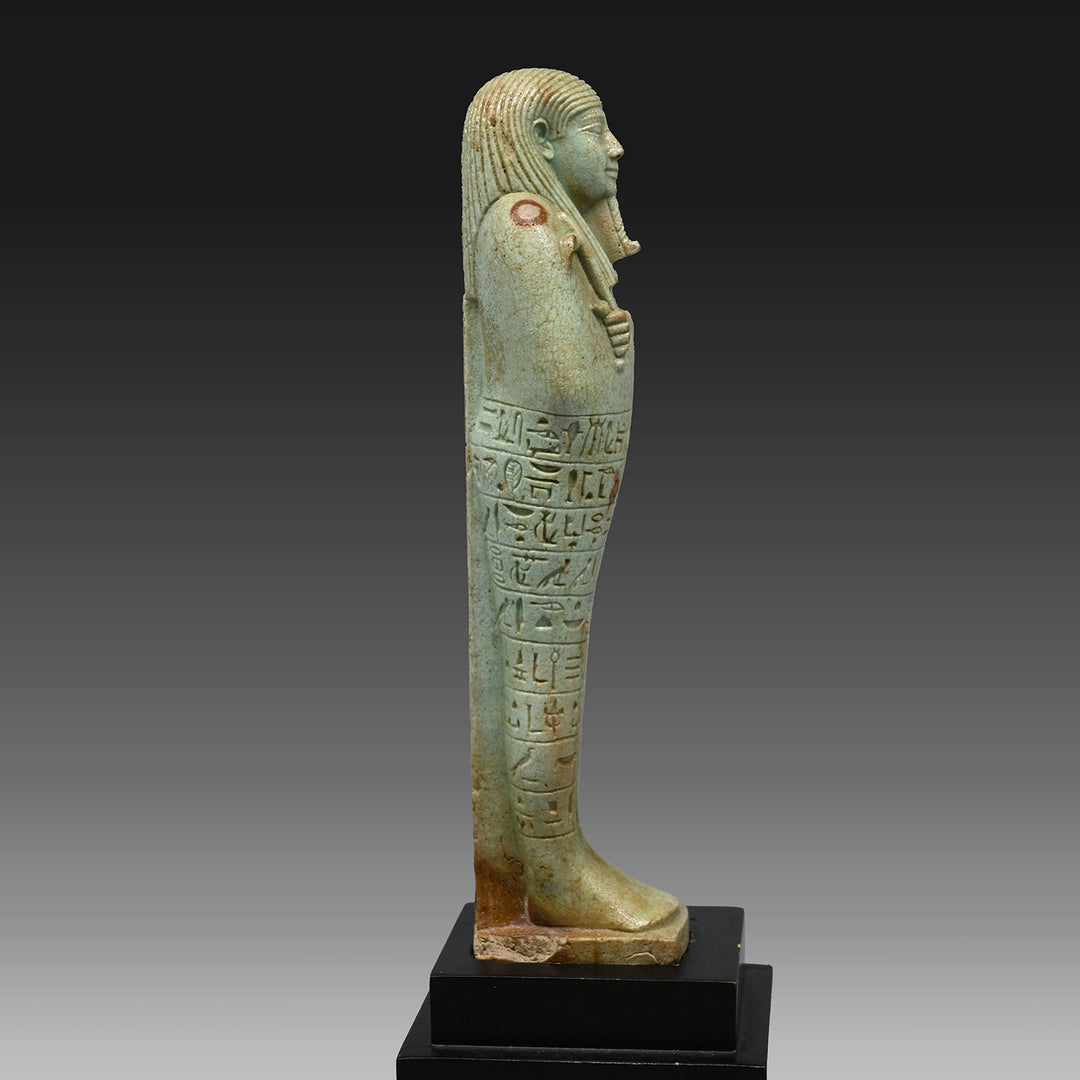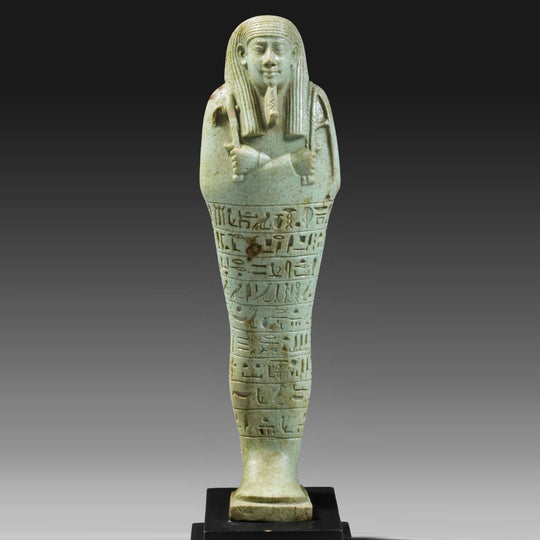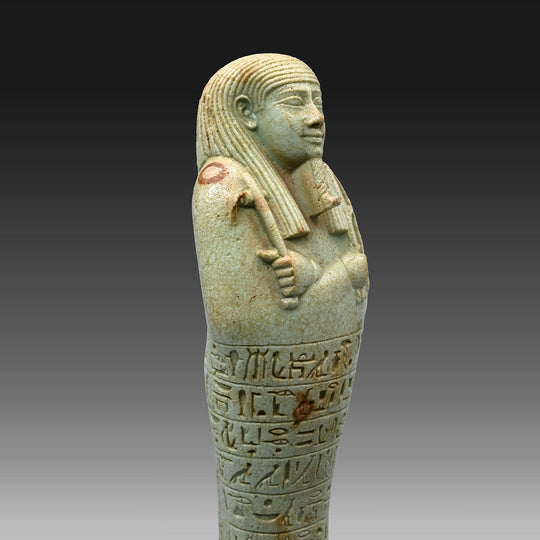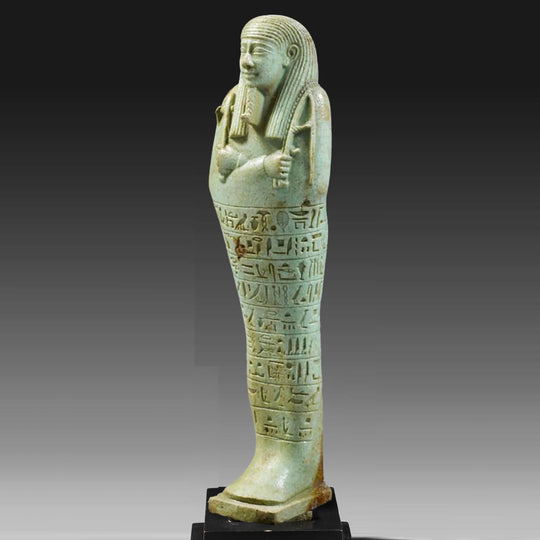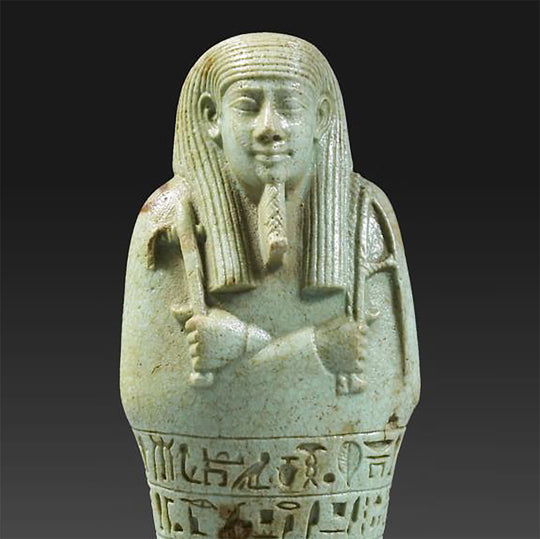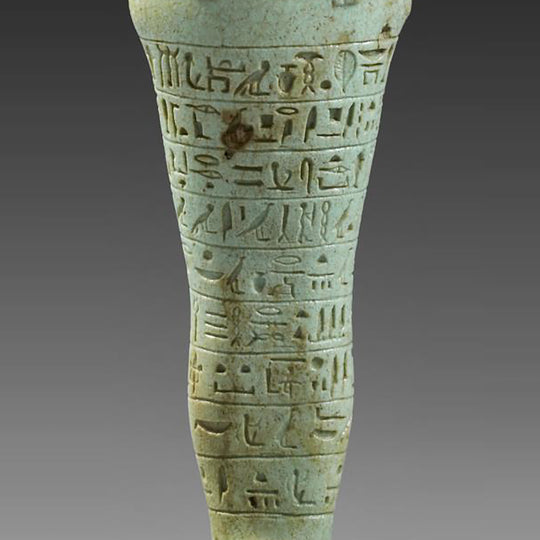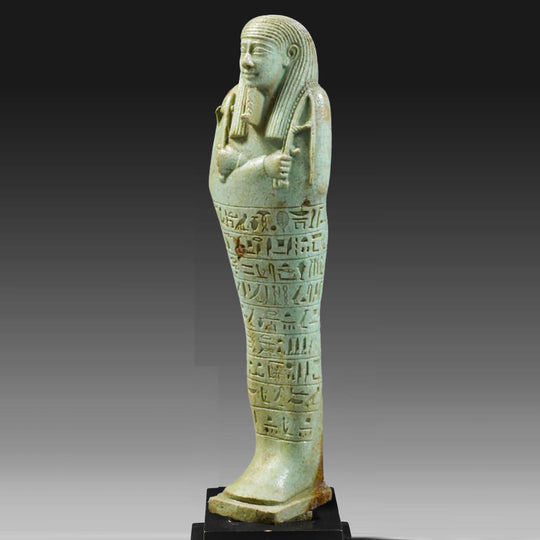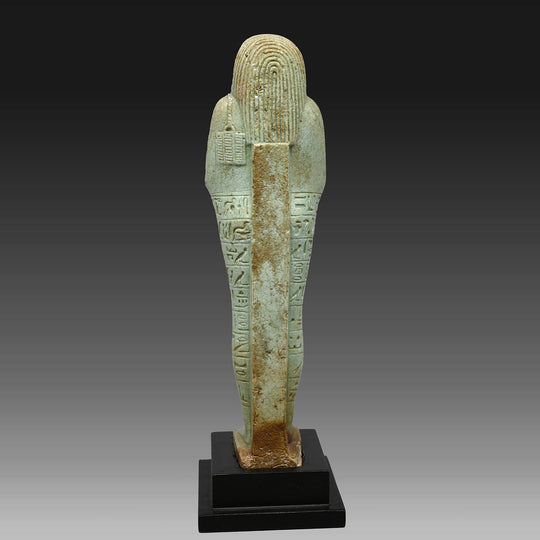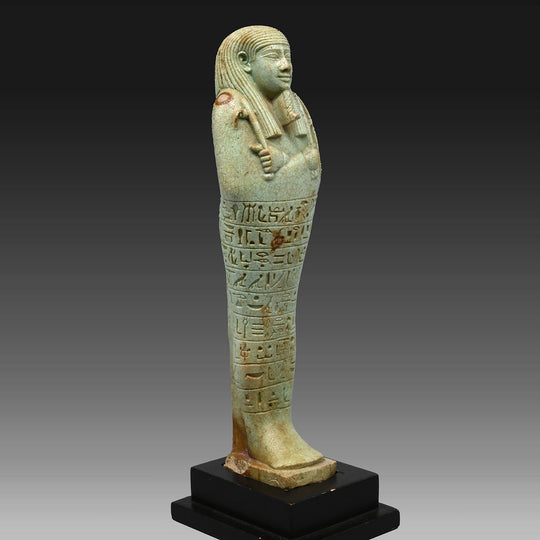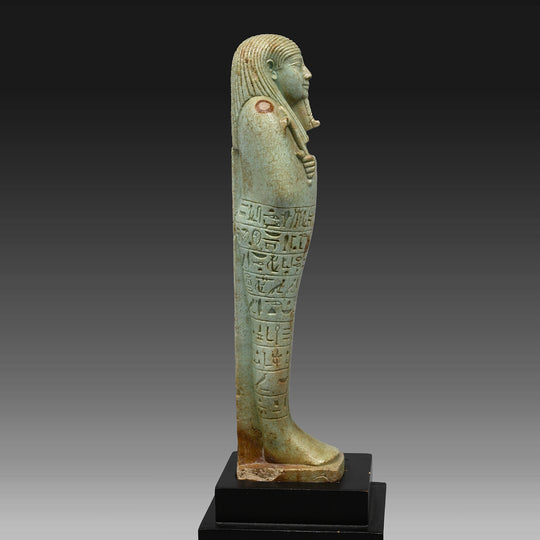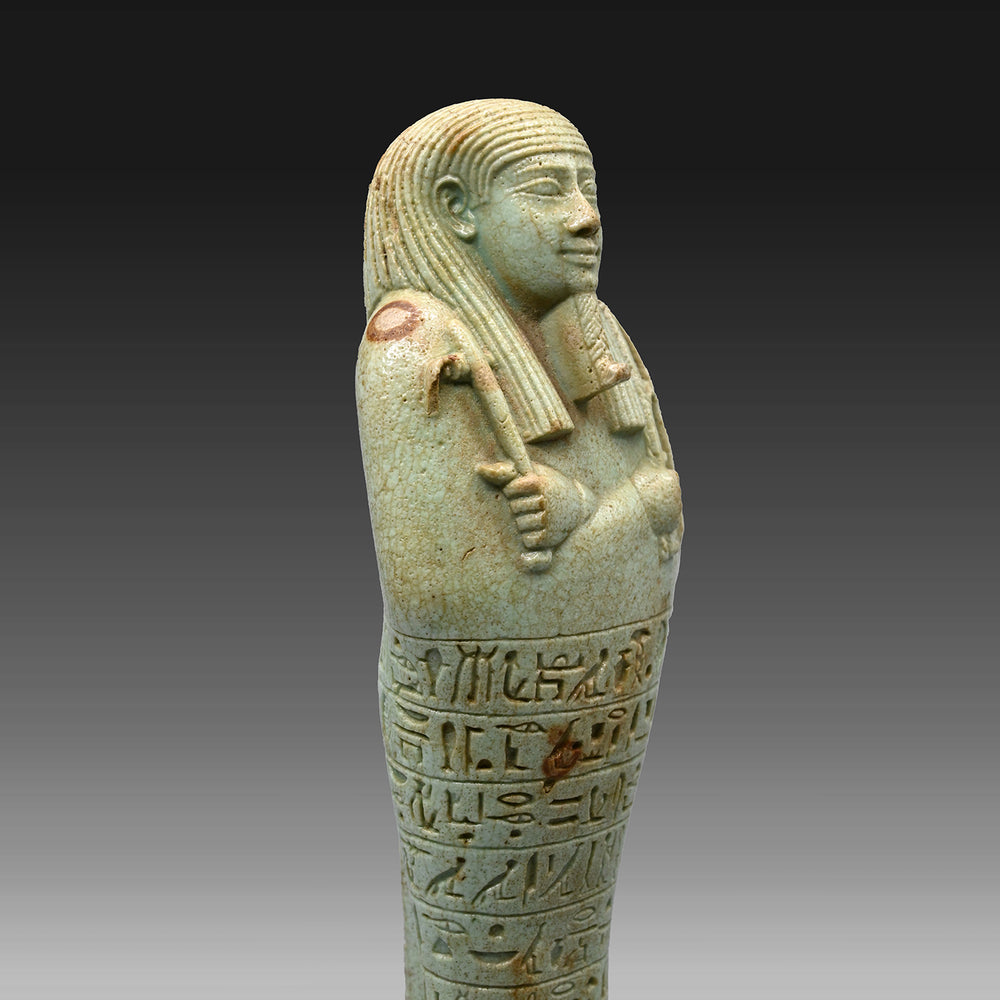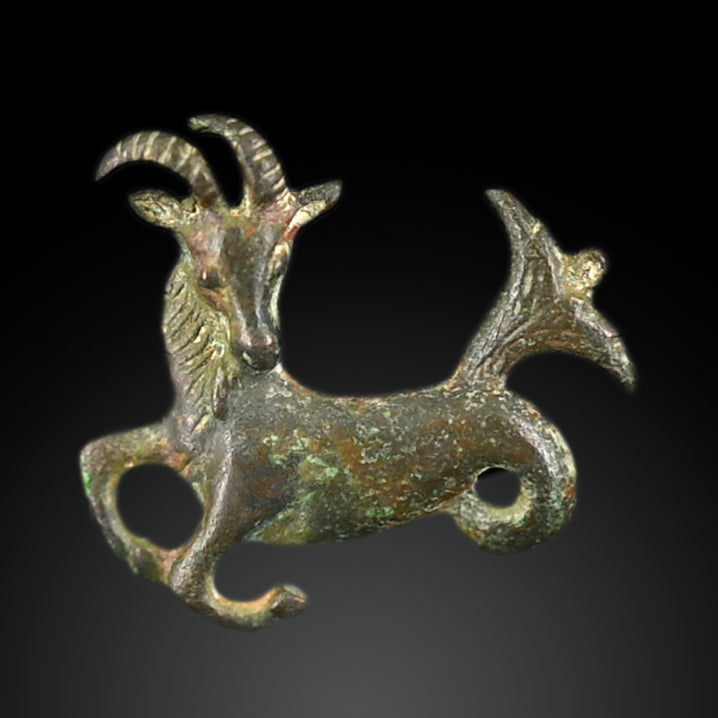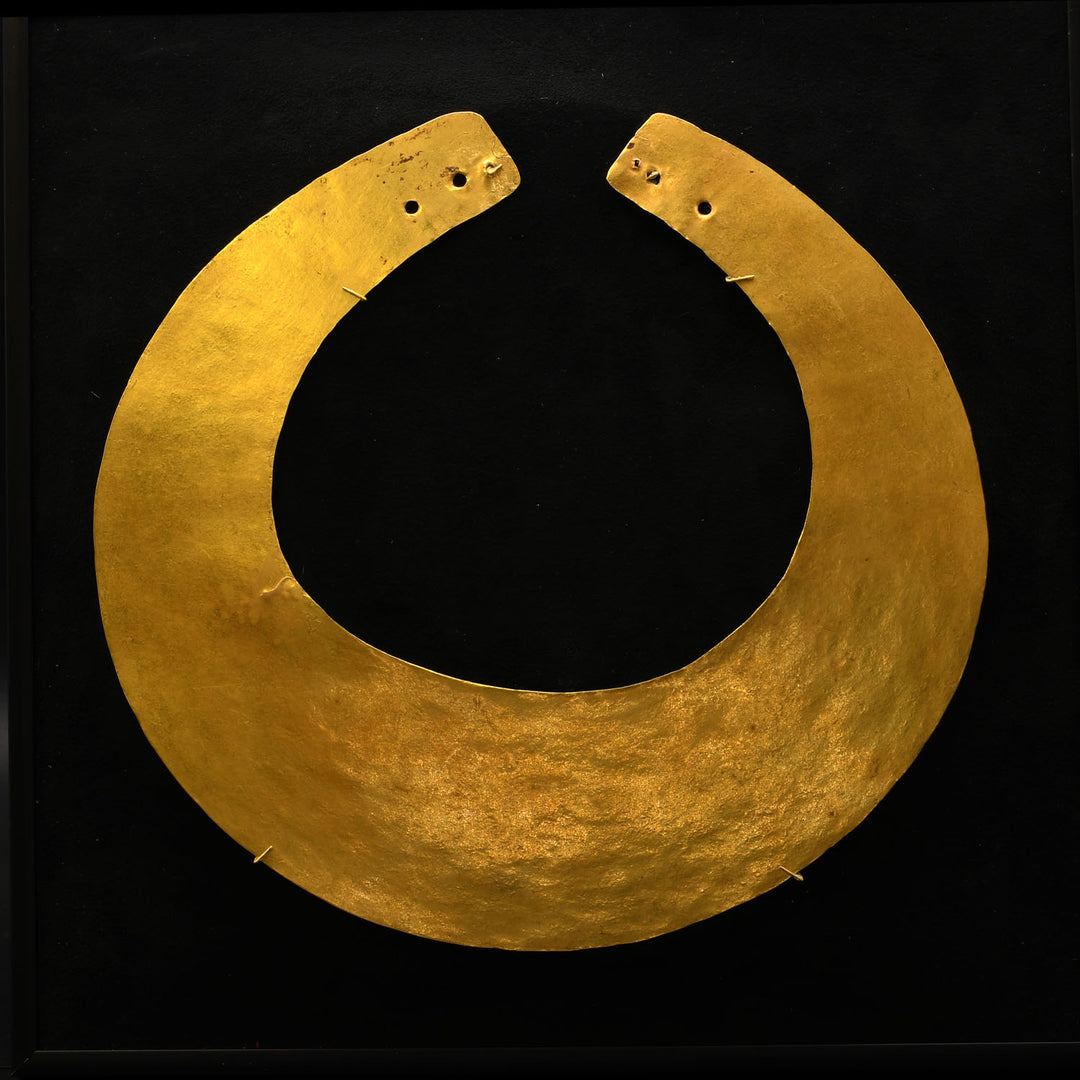An exceptional Egyptian Faience Ushabti for Wah-ib-re-em-akhet, 26th Dynasty, 664 - 525 BC
EU2303
- This object qualifies for free USA shipping and a flat rate fee of $60 if shipping internationally.
Of exceptional quality, a green glazed composition ushabti for Wah-ib-re-em-akhet, shown standing on a trapezoidal base and raised pillar at the back, moulded in mummiform, wearing a tripartite wig and plaited divine beard. The face is defined with incised mouth, large almond shaped eyes, the arms are crossed on the chest, hands protude from the shroud, the fists holding an adze and hoe for work in the afterlife, the right hand also holding a twisted rope connected to an seed basket behind the left shoulder. The legs are inscribed with part of Chapter 6 of The Book of The Dead in nine rows of incised hieroglyphs that names the owner as Wah-ib-re-em-akhet, “the god’s father” and “prophet of the house of the Lady of the Sycamore” (ie: Hathor).
Wah-ib-ra-em-akhet is also known through his inscribed sarcophagus in the Rijksmuseum van Oudheden, Leiden and was of Greek descent. Alexandra Villing writes: "The case of Wahibreemakhet, son of Alexikles and Zenodote, is the most prominent example for the high status that Greeks – as mercenaries or advisors – could attain in Egypt under the Saite pharaohs...his final resting place should be identified in a tomb at Saqqara that was probably discovered by agents of Giovanni Anastasi in the 1820s and that contained not only Wahibreemakhet’s elaborate stone sarcophagus (now in Leiden), canopic jars (in Stockholm) and shabtis (in various collections), but also a set of limestone tomb reliefs recording spells from the Book of the Dead that are today in the collection of the British Museum and that were once erroneously attributed to ‘Campbell’s tomb’ at Giza. Wahibreemakhet’s rich burial, dating to the decades around 600 BC, and his ranking title ‘Royal Sealer’ illustrate both his social status and his assimilation to Egyptian culture." (Villing, A. (2018), 'Wahibreemakhet at Saqqara', Zeitschrift für Ägyptische Sprache und Altertumskunde, 145(2), 174-186)
Publications for Wah-ib-re-em-akhet ushabtis:Schneider, Hans D., Shabtis - An Introduction to the History of Ancient Egyptian Funerary Statuettes. With a Catalogue of the Collection of Shabtis in the National Museum of Leiden. (3 volumes, Leiden, 1977), Volume II, p. 164, no. 5.3.1.55.
Bovot, J.L., Lourve- Chaouabtis (Paris 2003) p. 52 Cat 91
Kaiser, W., Agyptisches Museum Berlin (Germany, 1967) no. 906 Nr 937
Perdu, O., R. Meffre, R., Le Crepuscule Despharaons, Exhibition Musee Jacquemart-Andre (Bruxelles, 2012) p. 151 no. 74
Seipel, W., Das Vermachtnis der Pharaonen, Musem Reitburg, Zurich (Germany, 1993) pp. 280 - 281 no. 208
Vogel, B., Meisterwerke Altagyptischer Keramik, Exhibition 16 Sep – 30 Nov 1978, Berlin, Bonn, Hannover, Heidelberg, Hildescheim, Munchen (Hachenburg, 1978) pp. 192 - 193 No 331.
Medium: Faience
Dimensions: Height: 7 3/8 inches (18.7 cm)
Condition: Small chip to right back base that does not detract, otherwise the ushabti is intact and in excellent condition overall. An exceptional example.
Provenance: Private European collection, 19th Century, possibly acquired from Giovanni d’Anastasi. who sold Leiden the sarcophagus and several ushabtis for Wah-ib-re-em-akhet, Belgian collection P.F. assembled prior to 1968, J. Lewis private collection, acquired from Harmakis Ancient Art, Brussels, Belgium, in 2010, thereafter private Canadian collection.
Sands of Time provides a lifetime, unconditional guarantee of authenticity and provenance. Every object you purchase from us is accompanied by a Certificate of Authenticity, stating culture, provenance, and age.
Furthermore, we conduct due diligence to ensure the item, to the best of our knowledge, has not been illegally obtained from an excavation, architectural monument, public institution, or private property. Wherever possible, reference is made to existing collections or publications.Wherever possible, reference is made to existing collections or publications.
We ship Tuesday to Friday with FedEx and usually same day if your order is received before 2pm. Within the continental USA, packing, shipping and insurance is free. Depending on size and destination, delivery times range from one to five business days.
For overseas shipments we charge a small flat rate which includes packing, preparation of all customs paperwork, insurance and carrier fees in compliance with all USA and International customs requirements. Overseas shipments are sent using either USPS Priority Mail or FedEx but contact us if you have a shipping preference. International customers are responsible for all duties and taxes.


